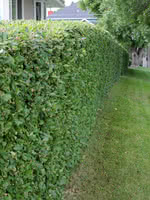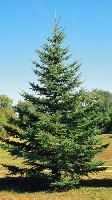Mon-Fri 9am - 5pm Mountain time
Peking Cotoneaster vs Black Hills Spruce
Cotoneaster acutifolia
Picea glauca var. densata
NOT AVAILABLE THIS SEASON - MIGHT RETURN
Peking Cotoneaster is a medium-sized shrub that is well adapted to colder climates. Best suited for use as a hedge, Peking Cotoneaster has dark green foliage that turns a stunning reddish orange in the fall.
Hardy fruit guru, Bernie Nikolai (DBG Fruit Growers), has started to recommend grafting hardy pear varieties to Peking Cotoneaster after his experiences were successful and produced fruit faster than other rootstocks. Remember to leave some nurse limbs if you try this.
Black Hills Spruce is a subspecies of White Spruce native to the Black Hills of South Dakota. It has a strongly conical form, slower growth rate and denser foliage than typical white spruce, making it preferable as a specimen tree for smaller suburban lawns. It also responds well to pruning, and can be used as a hedge or even bonsai.
Peking Cotoneaster Quick Facts
Black Hills Spruce Quick Facts
In row spacing: 0.3 m (1.0 ft)
In row spacing: 3 - 4 m (10 - 12 ft)

